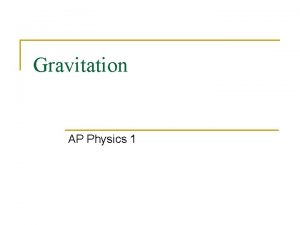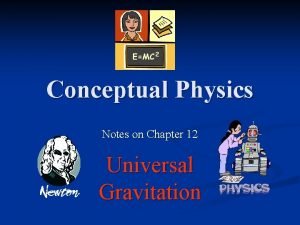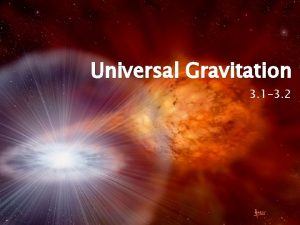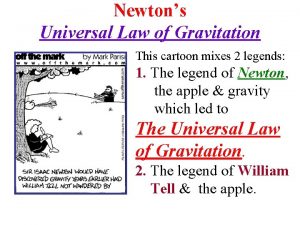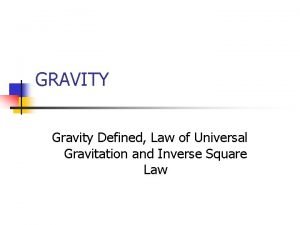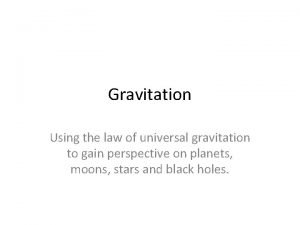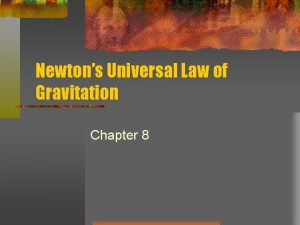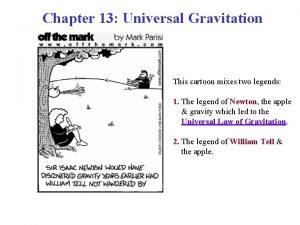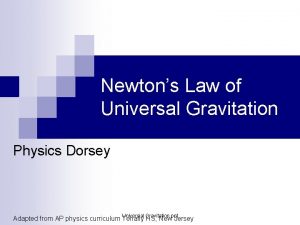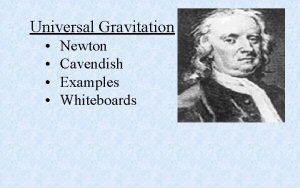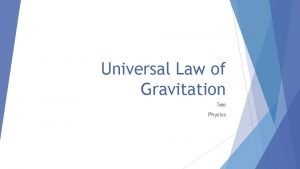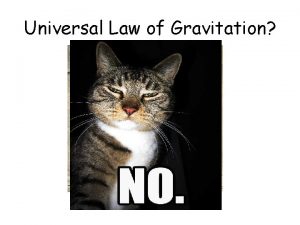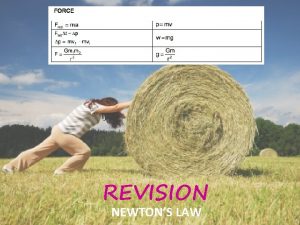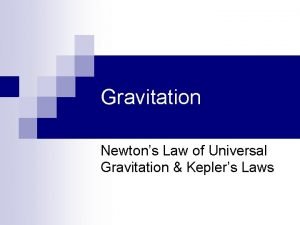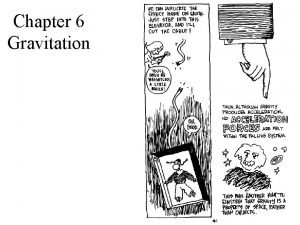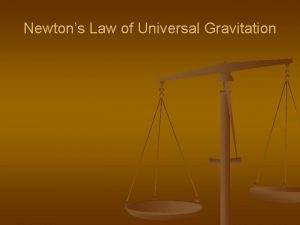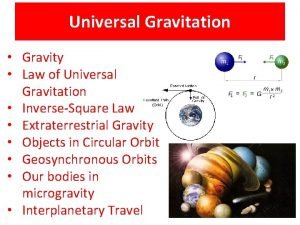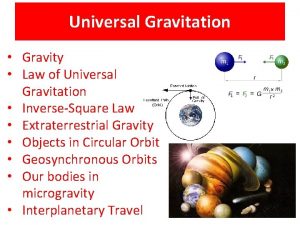Newtons Law of Universal Gravitation Physics Mrs Coyle












- Slides: 12

Newton’s Law of Universal Gravitation Physics Mrs. Coyle

Isaac Newton n 1666, England (45 years after Kepler).

Questions n n n If the planets are orbiting the sun , what force is keeping them in orbit? What force keeps the moon in its orbit? Could the force of gravity be universal?

Newton’s Law of Universal Gravitation n Any two objects attract each other with a gravitational force, proportional to the product of their masses and inversely proportional to the square of the distance between them. n The force acts in the direction of the line connecting the centers of the masses.

Newton’s Law of Universal Gravitation http: //scienceblogs. com/startswithabang/upload/2009/07/meet_our_second_moon/400 px-Newtons. Law. Of. Universal. Gravitation. svg. png

Why does the moon not fall straight down onto the earth?

Henry Cavendish’s experiment determined the proportionality constant G in 1798. http: //www. newscientist. com/data/images/archive/16390101. jpg

The Value of G. G= 6. 67 x 10 -11 N m 2 / kg 2

Change of Gravitational Force with Distance n Law of universal gravitation is known as an inverse square law.

Problem 1 n Two spheres of mass 35 kg are 60 m apart. A) What force does one exert on the other? B) If the mass of on is tripled and the radius is quadrupled how does the force change?

Problem 2 n Two spheres of equal mass have a force of gravity of 7 x 10 -9 exerted on each other. If the distance between them is 7 m, find the mass.

Problem 3 n Find the value of the gravitational acceleration g. The mass of the earth is 6. 0 x 1024 kg.
 Newton's universal law of gravitation ap physics 1
Newton's universal law of gravitation ap physics 1 Conceptual physics chapter 13 universal gravitation
Conceptual physics chapter 13 universal gravitation Explain newton’s universal law of attraction/gravitation.
Explain newton’s universal law of attraction/gravitation. The universal law of gravitation written by isaac
The universal law of gravitation written by isaac Gravitational field strength equation
Gravitational field strength equation Universal gravitation law
Universal gravitation law Angular acceleration formula in terms of radius
Angular acceleration formula in terms of radius Universal gravitation law
Universal gravitation law Universal law of gravitation calculator
Universal law of gravitation calculator Newton's universal law of gravitation simplified
Newton's universal law of gravitation simplified 13 universal law
13 universal law Law of universal gravitation ppt
Law of universal gravitation ppt Law of universal gravitation kid definition
Law of universal gravitation kid definition
